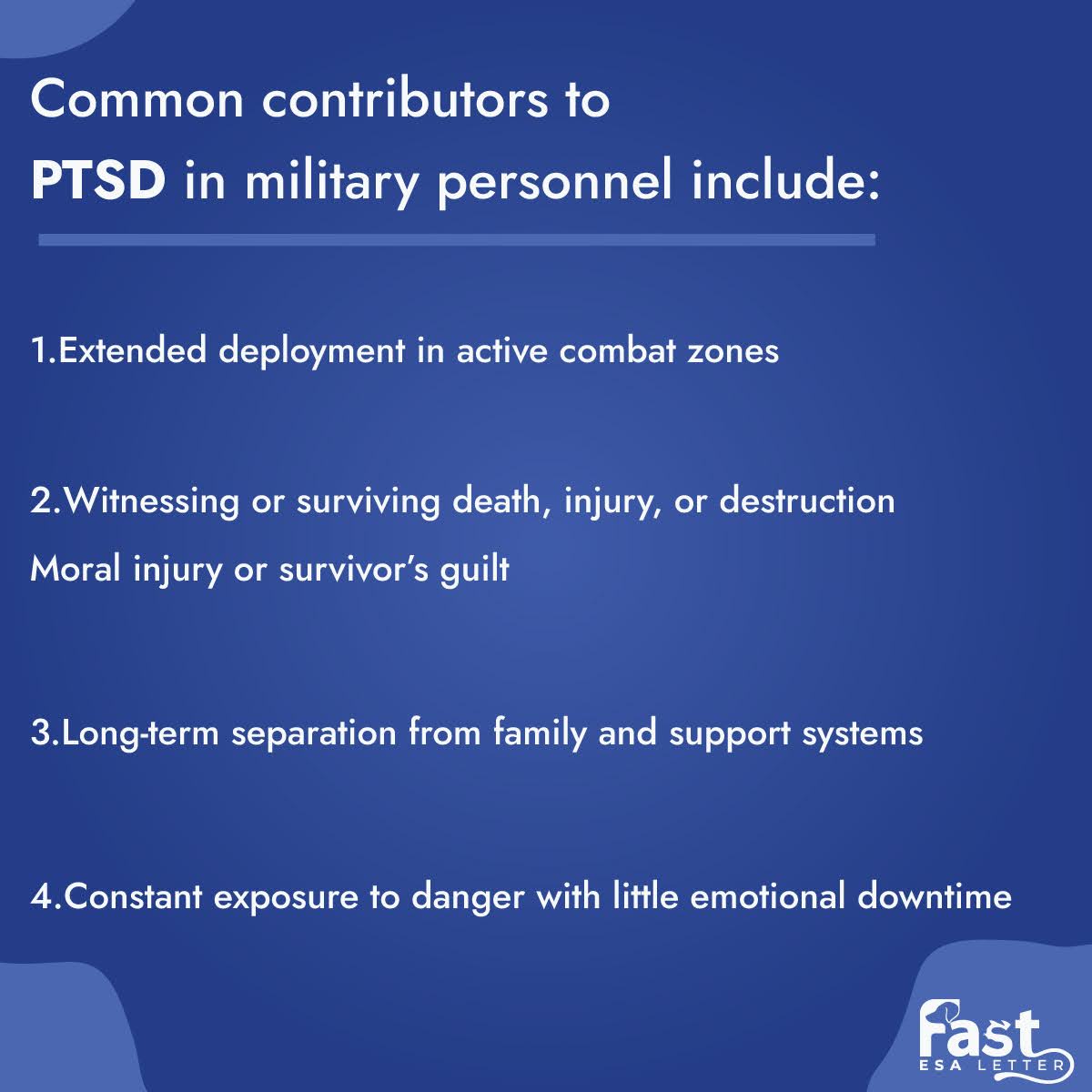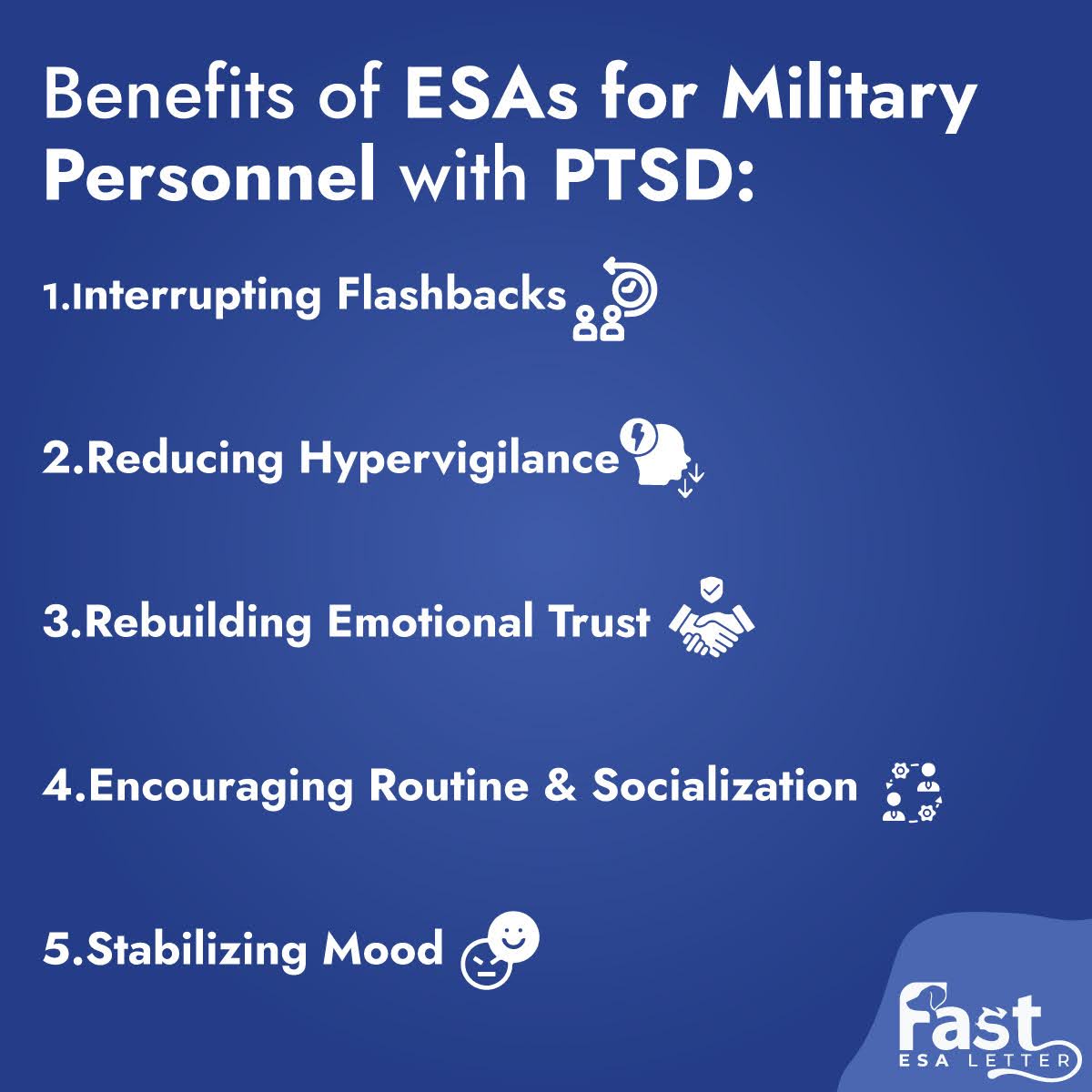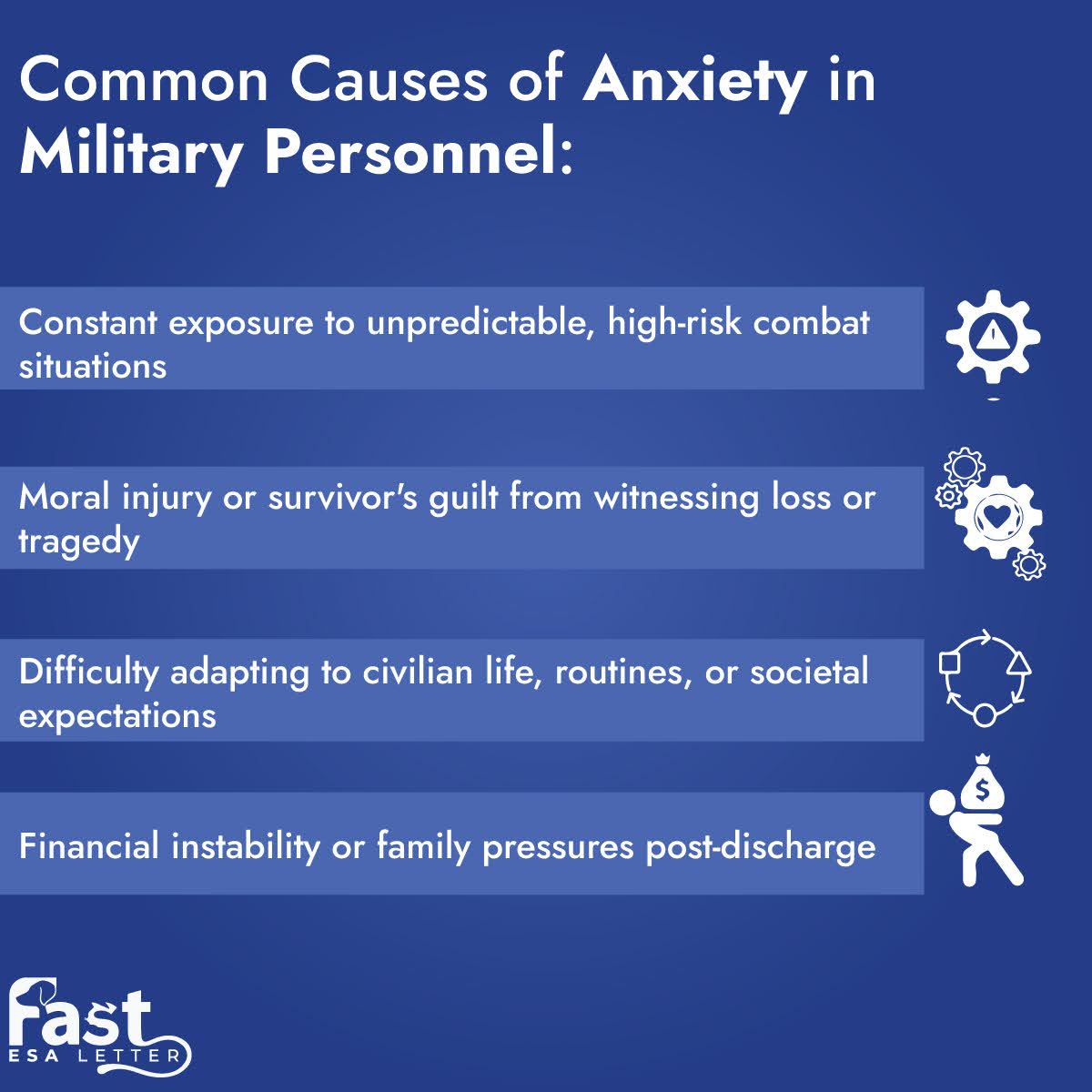How Emotional Support Animals Help Military Personnel Cope with PTSD and Anxiety?

Post-Traumatic Stress Disorder (PTSD) and anxiety aren’t just emotional scars — for many military personnel, they are daily battles that persist long after leaving the front lines. From flashbacks and insomnia to heightened anxiety and emotional numbness, these invisible wounds can disrupt every aspect of life. In recent years, Emotional Support Animals (ESAs) have emerged as a meaningful and natural form of support for veterans.
Unlike medication or talk therapy alone, ESAs offer something uniquely grounding. Backed by scientific research and thousands of veteran experiences, these animals can ease the weight of trauma by simply being present. Whether it’s a loyal dog curling up beside you during a panic attack or a calming cat that soothes social anxiety, emotional support animals help military personnel cope with PTSD and anxiety in ways that are deeply personal, profoundly healing, and often life-changing. Let’s explore how emotional support animals help military personnel heal.

What Is PTSD and How Does It Affect Military Personnel?
Common Causes of PTSD in Military Personnel:

Common contributors to PTSD in military personnel include:
- Extended deployment in active combat zones
- Witnessing or surviving death, injury, or destruction
- Moral injury or survivor’s guilt
- Long-term separation from family and support systems
- Constant exposure to danger with little emotional downtime
These experiences don’t end when deployment ends. For many, the psychological impact of war lingers, making it difficult to adjust to civilian life and maintain emotional stability.
How Do Emotional Support Animals Help Military Personnel with PTSD?

Benefits of ESAs For Military Personnel With PTSD
- Interrupting Flashbacks: The calming presence of an ESA helps military personnel stay grounded during dissociative or intrusive episodes.
- Reducing Hypervigilance: ESAs promote a sense of safety, lowering the constant alertness associated with PTSD.
- Rebuilding Emotional Trust: The bond with an ESA encourages emotional reconnection in a non-threatening way.
- Encouraging Routine & Socialization: Caring for an animal fosters daily structure, responsibility, and increased social interaction.
- Stabilizing Mood: The unconditional love and companionship of an ESA can alleviate depressive symptoms and promote emotional balance.
While traditional treatments may feel clinical or impersonal, ESAs provide non-judgmental emotional support—helping military personnel feel secure, seen, and emotionally connected on their path to recovery.
What Is Anxiety and How Does It Affect Military Personnel?

- Constant exposure to unpredictable, high-risk combat situations
- Moral injury or survivor’s guilt from witnessing loss or tragedy
- Difficulty adapting to civilian life, routines, or societal expectations
- Financial instability or family pressures post-discharge
How Emotional Support Animals Help Military Personnel Cope with Anxiety?

Benefits of ESAs for Military Personnel with Anxiety:
- Relieving Excessive Worry: Interactions like petting, cuddling, or grooming stimulate the release of oxytocin and serotonin, hormones known to calm the nervous system and reduce anxious thoughts.
- Managing Panic Attacks: During episodes of restlessness or panic, ESAs serve as a grounding tool, helping focus on breath and sensory input.
- Improving Sleep: Sleeping beside an ESA creates a sense of safety and emotional comfort, which may enhance sleep quality and reduce nighttime anxiety.
- Easing Social Anxiety: The presence of an ESA in public spaces offers emotional security and reduces fear of social judgment—making community reintegration smoother.
For military personnel, these animals act as emotional stabilizers—providing consistent structure, comfort, and a daily routine that fosters long-term emotional resilience and healing.
How to Select the Best ESA Breeds for Military Personnel with Anxiety and PTSD?
Choosing the right emotional support animal breed is a crucial step for military personnel coping with anxiety and post-traumatic stress disorder (PTSD). Not all breeds provide the same level of comfort, responsiveness, or adaptability. The goal is to find a breed that not only matches your lifestyle but also offers reliable emotional grounding during moments of distress.
When selecting an ESA breed, one should consider:
- Temperament: Look for calm, affectionate, and intuitive breeds that can sense emotional shifts and respond with comfort.
- Trainability: Highly trainable breeds are easier to integrate into daily routines and are more likely to follow commands during anxiety-inducing situations.
- Energy Level: Consider whether you need a breed that encourages outdoor activity or one that thrives in a quieter home setting.
- Size and Environment: Match the breed’s size with your living situation, especially if you live in an apartment or shared housing.
- Compatibility with PTSD Triggers: Avoid breeds known for nervousness or aggressiveness, which can worsen anxiety symptoms.
Choosing the best ESA breed isn’t just about appearance—it’s about finding a partner that complements your emotional needs and lifestyle. Consulting a licensed mental health professional for an ESA letter is the first step to ensuring your support animal is legally recognized and aligned with your therapeutic goals.
How to Get an Emotional Support Animal for Military Personnel?
Step 1: Sign Up and Schedule Your Consultation
Step 2: Connect with a Licensed Mental Health Professional (LMHP)
Step 3: Receive Your Legally Compliant ESA Letter
- Your full name and mental health status
- The LMHP’s licensing credentials and contact details
- A formal statement verifying the necessity of an emotional support animal for PTSD or anxiety
- The date of issuance and provider’s signature
Conclusion
By reducing stress, easing trauma-related symptoms, and fostering daily stability, ESAs help service members rebuild their emotional well-being in a compassionate, non-judgmental way. Whether you’re struggling with post-traumatic stress or battling persistent anxiety, an ESA can play a transformative role in your recovery journey. If you’re ready to experience the healing bond of an emotional support animal, begin by securing a legitimate ESA letter.
Start your path toward emotional resilience today—because every hero deserves peace, purpose, and the unconditional support of a loyal companion.
Frequently Asked Questions (FAQs)
What Is The Difference Between A Service Dog And An Emotional Support Animal?
Can Military Veterans With Ptsd Get A Service Dog?
Yes. Military veterans with PTSD can qualify for a PTSD service dog, particularly when diagnosed with symptoms like hypervigilance, panic attacks, or social withdrawal. These dogs are recognized under the Americans with Disabilities Act (ADA) and must be trained to assist with disability-related tasks.
How Do Emotional Support Animals Help With Ptsd And Anxiety?
What Is The Process To Get An Emotional Support Animal For Ptsd?
- Sign up and complete your details
- Attend a virtual consultation with a licensed mental health professional
- Receive your ESA letter via email, if approved
Is Animal-Assisted Therapy Approved For Ptsd Treatment In Veterans?
How Much Does It Cost To Get An Emotional Support Animal Letter?
The cost of an ESA letter typically ranges between $80 and $200, depending on the provider. Fast ESA Letter offers a complete evaluation and documentation package for just $149, making it an affordable solution for veterans and civilians seeking emotional support.
Can I Have More Than One Emotional Support Animal For Ptsd?
Yes. You can have multiple emotional support animals if a licensed mental health professional determines they are necessary for your mental health. This is often the case in individuals with complex PTSD or co-occurring disorders like anxiety and depression.
Do You Need To Pay A Fee For Housing If You Have A Ptsd Support Animal?
No. Under the Fair Housing Act, landlords cannot charge additional fees, deposits, or pet rent for an emotional support animal, provided you submit a valid ESA letter from a licensed provider.
Post Author
Prince Sharma
Related Articles
What Is an ESA Letter?
What Is an Emotional Support Animal (ESA) Letter?An ESA letter is a prescription by a mental health professional stating that an animal provides emotional support for a person with a mental health condition.Medically Reviewed by Robert Clendenin,...
How to Get a Refund on Pet Deposit for Emotional Support Animals
How to Successfully Get a Pet Deposit Refund for Your Emotional Support Animal?To successfully get a pet deposit refund for your ESA, submit a valid ESA letter from a licensed mental health professional to your landlord, stating your need for the...
Can A Rottweiler Be An Emotional Support Dog?
Can A Rottweiler Be An Emotional Support Dog?Yes, a Rottweiler can be an Emotional Support Dog. Their loyalty, calm temperament, and strong bond with their owners make them well-suited for providing emotional support.Medically Reviewed by Robert...
Live Free with Your ESA!
An ESA Letter Unlocks Freedom!






